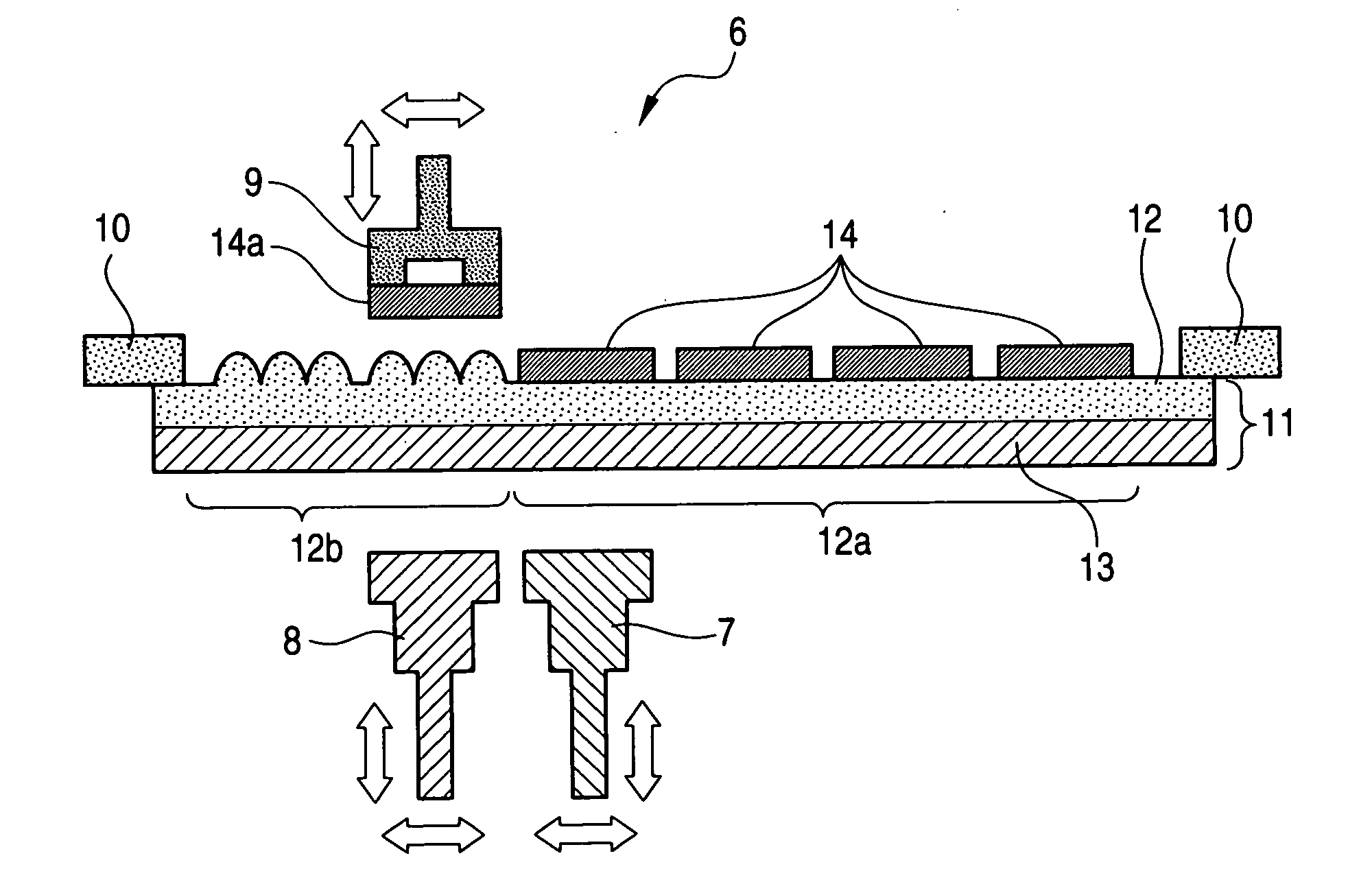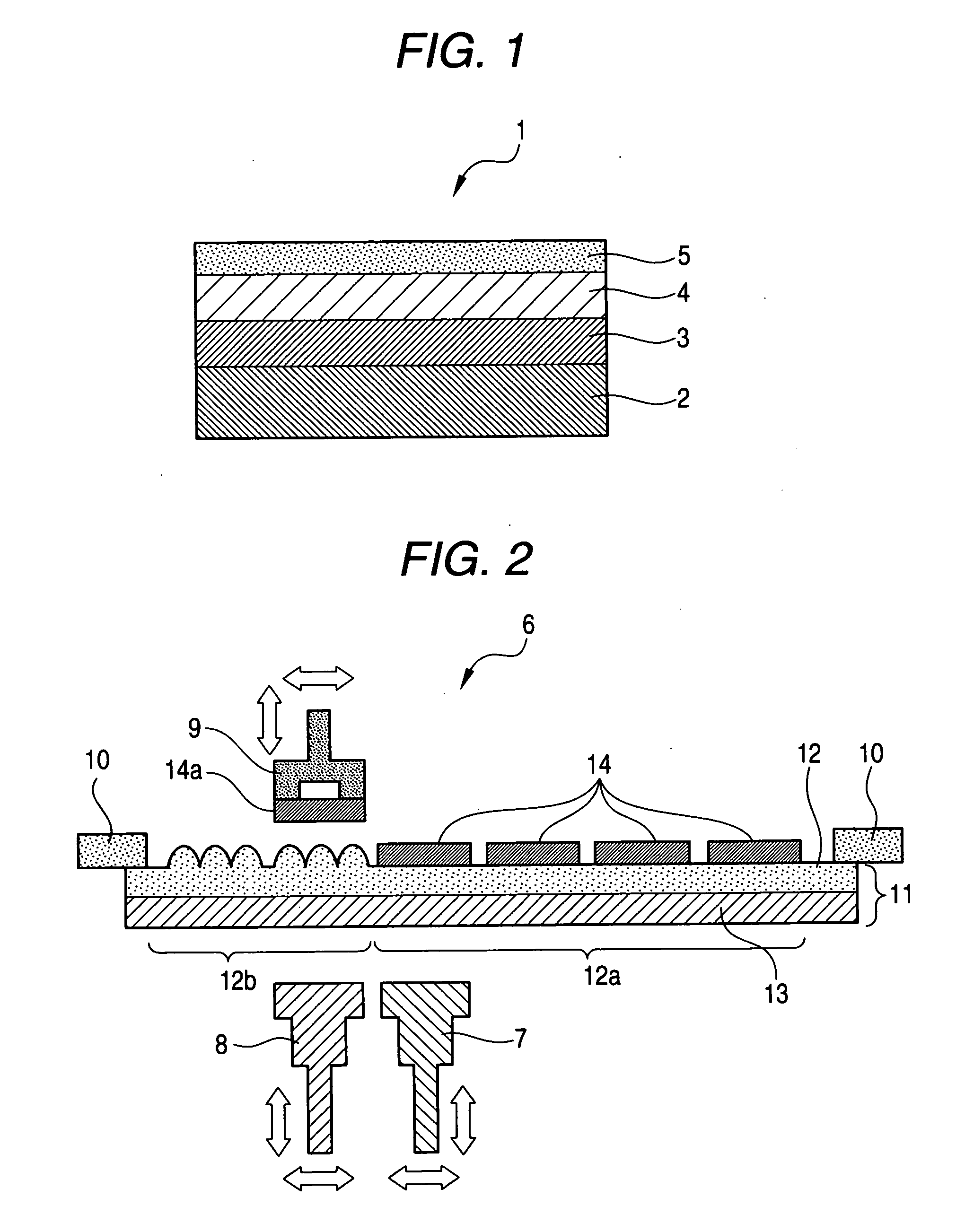Method of thermal adherend release and apparatus for thermal adherend release
a technology of thermal adherends and adhesives, which is applied in the direction of film/foil adhesives, chemistry apparatus and processes, layered products, etc., can solve the problems of difficult uniform shrinkage of the base material in the machine direction and the transverse direction, the difficulty of reducing the adhesive strength between the diced semiconductor chip and the base material, and the breakage of the semiconductor chip, etc., to suppress or prevent the generation of inconveniences, the effect of simple and rapid separation
- Summary
- Abstract
- Description
- Claims
- Application Information
AI Technical Summary
Benefits of technology
Problems solved by technology
Method used
Image
Examples
example 1
[0135] In a thermal release type pressure sensitive adhesive tape (fixed by a fixing ring) constructed of a polyester base material (100 μm in thickness) and a heat-expandable pressure-sensitive adhesive layer, whose adhesive strength is lowered at 90° C. (the release start temperature is 90° C.), as formed on one surface of the polyester based material, a silicon wafer (150 μm in thickness) having a diameter of 6 inches was stuck on the surface of the heat-expandable pressure-sensitive adhesive layer without incorporation with air bubbles. Thereafter, the foregoing silicon wafer was diced into a size of 3 mm in square.
[0136] Also, a pre-heating section and a release and heating section in which a stainless steel (SUS 304) plate having a size of 3 mm in square and a thickness of 2 mm and a thermally conductive rubber sheet (3 mm in square and 1 mm in thickness) were provided in a tip of an electric heater were respectively prepared as the pre-heating section and the release and hea...
example 2
[0139] A cut piece of a silicon wafer was released in the same manner as in Example 1, except for using a thermal release type pressure sensitive adhesive tape having a heat-expandable pressure-sensitive adhesive layer having a release start temperature of 120° C. as the thermal release type pressure sensitive adhesive tape and employing the conditions such that the temperature of the rubber sheet part (leading-tip part) in the pre-heating section was 105° C. and that the temperature of the rubber sheet part (leading-tip part) in the release and heating section was 170° C. On this occasion, when the cut piece of the silicon wafer was adsorbed by the adsorption nozzle and released, a time required for releasing one cut piece of the silicon wafer (time required for release in average) was 1.5 seconds as shown in Table 1.
PUM
| Property | Measurement | Unit |
|---|---|---|
| temperature | aaaaa | aaaaa |
| mean particle size | aaaaa | aaaaa |
| mean particle size | aaaaa | aaaaa |
Abstract
Description
Claims
Application Information
 Login to View More
Login to View More - R&D
- Intellectual Property
- Life Sciences
- Materials
- Tech Scout
- Unparalleled Data Quality
- Higher Quality Content
- 60% Fewer Hallucinations
Browse by: Latest US Patents, China's latest patents, Technical Efficacy Thesaurus, Application Domain, Technology Topic, Popular Technical Reports.
© 2025 PatSnap. All rights reserved.Legal|Privacy policy|Modern Slavery Act Transparency Statement|Sitemap|About US| Contact US: help@patsnap.com


